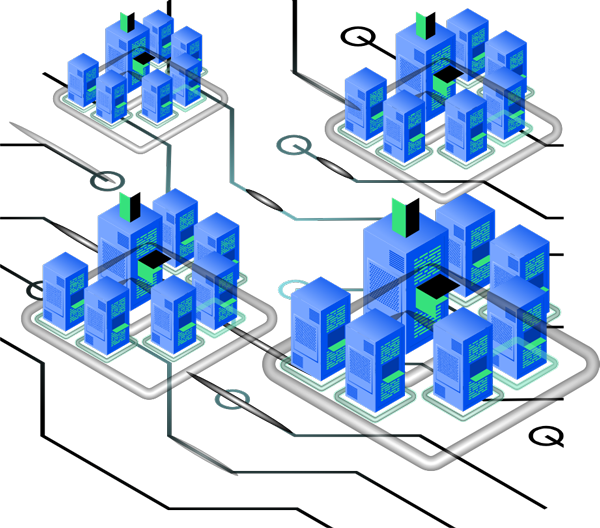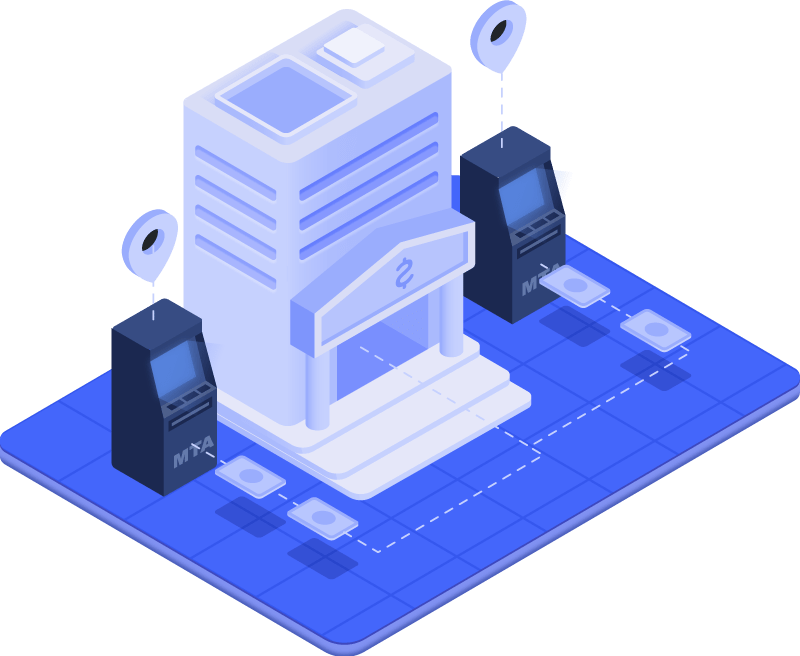Do You Really Need Enterprise Class Network Management?
White Papers
This paper begins with an overview of the basic categories of network management products, followed by a discussion of the key features of a great enterprise management system and the signs that a business may be ready for an enterprise-class solution.
The Goal of Network Management
 The ultimate goal of network management is to lower risk, eliminate downtime and slowdowns, minimize variability, and actively support business expansion. The amount of business conducted that doesn’t rely on available and performing networks is small and shrinking. A good network management system is an indispensable asset that protects the company from slowdowns and catastrophic outages that would have major business impact. But what kind of network management product do you need? Has your network reached the point where enterprise class features are necessary? If so, what does great enterprise network management software look like?
The ultimate goal of network management is to lower risk, eliminate downtime and slowdowns, minimize variability, and actively support business expansion. The amount of business conducted that doesn’t rely on available and performing networks is small and shrinking. A good network management system is an indispensable asset that protects the company from slowdowns and catastrophic outages that would have major business impact. But what kind of network management product do you need? Has your network reached the point where enterprise class features are necessary? If so, what does great enterprise network management software look like?
The Network Management Landscape
Network management products typically fall into three basic categories.
 Free Tools
Free Tools
There are free tools, some of which are basic versions of the above SMB products. These usually require manually loading devices into the system and offer a basic level of pinging or SNMP polling. They provide little to no elemental performance data and may offer rudimentary events, such as up/down device status. These tools are best suited for small networks of about 20 to 30 devices.

Intermediate SMB
At the next level are low-end to intermediate SMB solutions. Like framework solutions, they involve multiple products and/or “add-ons” that require at least some integration. They usually come with a low initial price tag and cover a range of functional areas such as discovery, inventory, and events, and, in intermediate solutions, some level of autodiscovery, performance, flow, and technical reporting or graphing capabilities. Data collected by these products is not as deep as that of enterprise class solutions, although some can be extended through programming. These may be effective products for smaller networks, but as networks scale bottlenecks may occur, especially in those designed with a central database.
 Enterprise Class Solution
Enterprise Class Solution
Enterprise class solutions let you manage the latest technologies and devices. These products provide sophisticated features for all of the requisite network monitoring functions, including detailed discovery and auto-discovery, inventory, events root cause analysis (with features such as downstream event suppression and rules), deep elemental and flow monitoring, performance, topology, configuration, and technical and business-focused reports and dashboards.
This category includes “legacy” framework solutions, which comprise multiple point products that must be individually integrated and maintained. It also includes “all-in-one” solutions where all (or most) functionality is embedded in a single software stream, with limited or no integrations and simpler scaling depending on the product’s architecture. Both framework and all-in-one enterprise solutions offer unlimited scalability, although all-in-one solutions tend to be less labor intensive due to their more unified designs.
Evaluating Network Management Products
Many IT directors evaluate network management products without a strategy, often considering a broad mix of free tools, low-end to intermediate SMB products, and enterprise class solutions at the same time. That’s like going car shopping and looking at a Yugo, a Porsche, and a Sherman tank. It begs the question: what are you going to do with this vehicle: pick up your children from school (safe car), take your mother-in-law to the hairdresser (cheap car), invade a small country (massive weapon), or race in the Indy 500 (fast car)?
Let’s look more closely at enterprise class. What does that mean, and is it for you? Not everyone needs enterprise level network management. If you have a network of only a dozen devices that are all stored in the same closet, you likely don’t need an enterprise solution. Free or SMB tools will suffice. They’ll tell you if the device is up or down in a simple list, and if you need to reboot a device, you simply go to the closet and turn it off and on again.
The first sign that you need an enterprise class network management solution is when it is really important that the network be continually up, but you can no longer draw a picture of your network on a whiteboard. When a network gets to be a few hundred devices or larger, you can no longer completely understand it. Therefore, you can no longer troubleshoot it in your head. This is when you need a management solution that can “crawl” the network and do it for you.
There are fundamental capabilities you should expect from an enterprise class network management solution as outlined in the next sections.
Enterprise-Class Network Management Solution
Discovery of Device Inventory and Topology
You cannot be expected to manually load the network device inventory into a network management system. It must auto-discover what you have, and do so continually. Networks change. Frequently. Furthermore, it must also discover the topology of the network, not require you to manually input what you think is how the network is connected. This sounds pretty basic, but it’s surprising how many SMB solutions cannot do this.
Root Cause Analysis
Lower end products are “red light / green light” products: they tell you what is up and what is down, in a list. Lists are useful when there are only a dozen or so devices in the network, but when there are hundreds or thousands of devices, lists are useless. You need a solution that not only tells you that something is wrong, but also tells you where the problem is. Dozens of network devices may be unreachable, but there is likely only one that is the true cause of the problem. This is why topology is so important.
Performance
A network that’s performing poorly is actually worse than a network that’s down. If your network is down, you go do something else to be productive. If a network is just very slow, you sit in front of your computer waiting for things to happen, wasting time and getting frustrated. A good enterprise-class network management system monitors the performance of the network at the device level and with an eye toward application flow as well.
Configuration
Though it’s widely accepted as truth that 90% of the problems on a network occur as a result of someone changing something, it’s remarkable how few network management solutions integrate device configuration change management into their solutions. It’s either a “bolt-on” afterthought or it’s completely missing. Network change management is no longer a separate solution. It’s a part of every-day operations.
Reporting
A management solution is only as good as the information you can get out of it. Every IT department must justify themselves to the senior management of the company (and to their customers). That means they must prove to their constituents that they’re providing the service to which they committed. Different “customers” want to see data at different levels of technical complexity, and a good network management system allows them to easily create and view appropriate dashboards and create reports at the CIO level, as well as at the technical user level.
Service Level Monitoring
You can think just of managing components: how they interrelate, how they’re connected, their health, and so on, but grouping those components and monitoring them as a service to meet SLAs and/ or ensure that end user needs are being met is what ultimately matters.
Monitoring at the service level is especially important for large networks where you can no longer keep track of every component in your head. In larger networks, appreciating the business relevance of each component means you must be able to monitor them as sub-components working together to deliver a service.
Proactive Management
An enterprise-class network management system warns you before the fact that you have a problem. Lower-end tools tell you that something has gone wrong after the fact. This is not acceptable for mission-critical networks. An enterprise-class management solution will tell you things like the secondary power supply on your core router has failed and you are running on your primary, or the temperature on this switch is rising and the fan is failing—at this rate, it will overheat tomorrow. Issues are identified before they become problems.
Intelligent Event Management
As data grows, so do the problems that accompany it. An enterprise-level business will produce far more data than any network engineer can handle, threatening to overwhelm them with alert storms. But for the most accurate insight into the network’s operations, you need all of that data, as well as comprehensive categorization of events far beyond a simple ‘up/down’ status. Enterprise network management software will make sense of this vast sea of data and reduce the noise to a manageable volume displaying what needs to be seen, without engineers having to sift through to find the most important issues.
Technology-friendly
It’s not just network size and distribution that is growing, but also the sophistication of the technology and protocols that keep the network running. As data and service demands increase, more technologies are required to keep an eye on how your network is functioning. However, because of scaling and resource issues, network management tools aimed at small businesses will be unable to cover the same degree of complexity that an enterprise solution can. High-end enterprise network management solutions can offer a host of crucial monitoring technologies for flow, NBAR, SDN and the cloud, to name but a few. These will only become more prevalent and therefore vital to ensuring excellent network performance.
Machine Learning
Though not yet mature, machine learning represents the next generation of technologies that will help the network engineer keep their network running. It is part of the current trend, embodied by methodologies such as AIOps, that employs technology in a capacity to assist and augment the human in their work. Big data has long exceeded the capacities of any human analytics, and so enterprise network management software now provides machine-based analytics to enhance both the accuracy and productivity of the people in the network operations center. Machine learning can help move a network team away from descriptive and predictive analytics towards a model of prescriptive analytics, where tools can help prescribe actions in the face of multiple future outcomes.
“Monitoring at the service level is especially important for large networks where you can no longer keep track of every component in your head. In larger networks, appreciating the business relevance of each component means you must be able to monitor them as sub-components working together to deliver a service.”
Automation and Device Support
A lot of this comes down to automation. Lower-end tools require you to manually control individual device settings, touch off reports, and load information into them. When you have a network of 10,000 devices, this is not an option. You need a network management system that automatically tracks your network inventory, runs regularly scheduled (and previously defined) reports, monitors and alerts on performance thresholds, and determines the root cause of problems.
There’s another issue that needs to be considered: device support. Lower end products don’t really dig into the network inventory since they don’t track performance or specific status of devices under management. They simply report that the device is responding or not responding. But higher order management products go into great depth of device understanding. When a network vendor comes out with a new device, the enterprise class managers need to add detailed support for that new device.
 Unfortunately, the hardware vendors don’t necessarily ask the software management vendors what their release schedules are and then sync to them. It’s important to ask a network management vendor how long it takes to add support for a newly released device.
Unfortunately, the hardware vendors don’t necessarily ask the software management vendors what their release schedules are and then sync to them. It’s important to ask a network management vendor how long it takes to add support for a newly released device.
Finally, there is the issue of operation. All this functionality needs to be usable, not just available. The product needs to be easily installed, quickly learned, and integrated in a cohesive whole.


